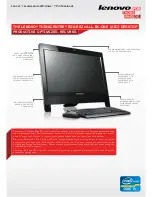
EPICenter Reports
EPICenter Reference Guide
418
●
Clicking the
First
or
Last
links to display the first or last page in the report
You can filter the events that are displayed by constructing a conditional filter using the fields at the top
of the page, as shown in
Figure 210
. You can construct a two-clause filter statement.
Figure 212: Configuration Management Activity Log filter specification
For further information on filtering, see
“Using Report Filtering” on page 379
.
Wireless Reports
The EPICenter wireless reports present information on wireless access points, interfaces (radios), and
clients.
A number of Extreme Networks switches extend network services to wireless 802.11a/b/g clients
within a fully integrated network infrastructure. Ports on these switches support wireless and Power
over Ethernet, and handle all of the management functions typically associated with an access point.
The Altitude 300 wireless port serves as the radio transmitter and receiver, inheriting configuration
information as soon as it is attached to the switch and as changes are made to the wireless profiles after
the system is deployed.
The wireless interfaces are radios. A switch port usually represents one interface, but if a wireless port
is connected, it adds two more interfaces to the switch port interface: interface 1 (A radio) and interface
2 (B/G radio). Thus, in the Interface column in several wireless reports, the interface is shown as
slot:port:interface_number:virtual_interface_number
; for example, 1:20:1:1. The virtual interface number is
currently not meaningful. It will be used in future Extreme Networks wireless features.
The wireless reports are explained in the following subsections.
Wireless Summary Report
The Wireless Summary Report provides an overview of the status of the wireless interfaces, Access
Points (APs) and wireless clients known to EPICenter (as shown in
Figure 213
). From this report you
can link to detail reports in a number of areas.
Summary of Contents for EPICenter 6.0
Page 14: ...EPICenter Reference Guide 14 ...
Page 18: ...Preface EPICenter Reference Guide 18 ...
Page 19: ...1 EPICenter Basic Features ...
Page 20: ......
Page 24: ...EPICenter Overview EPICenter Reference Guide 24 ...
Page 44: ...Getting Started with EPICenter EPICenter Reference Guide 44 ...
Page 100: ...The Inventory Manager EPICenter Reference Guide 100 ...
Page 140: ...The EPICenter Alarm System EPICenter Reference Guide 140 ...
Page 172: ...Configuration Manager EPICenter Reference Guide 172 ...
Page 196: ...The Firmware Manager EPICenter Reference Guide 196 ...
Page 220: ...The Interactive Telnet Feature EPICenter Reference Guide 220 ...
Page 250: ...The Grouping Manager EPICenter Reference Guide 250 ...
Page 276: ...Real Time Statistics EPICenter Reference Guide 276 ...
Page 342: ...Using the VLAN Manager EPICenter Reference Guide 342 ...
Page 348: ...The ESRP Monitor EPICenter Reference Guide 348 ...
Page 446: ...EPICenter Reports EPICenter Reference Guide 446 ...
Page 447: ...2 Advanced Upgrade Features ...
Page 448: ......
Page 480: ...EAPS Protocol Monitoring and Verification EPICenter Reference Guide 480 ...
Page 508: ...Using the Policy Manager EPICenter Reference Guide 508 ...
Page 525: ...3 Appendices ...
Page 526: ......
Page 542: ...EPICenter Backup EPICenter Reference Guide 542 ...
Page 564: ...Voice over IP Manager EPICenter Reference Guide 564 ...
Page 580: ...EPICenter Reference Guide 580 ...
















































